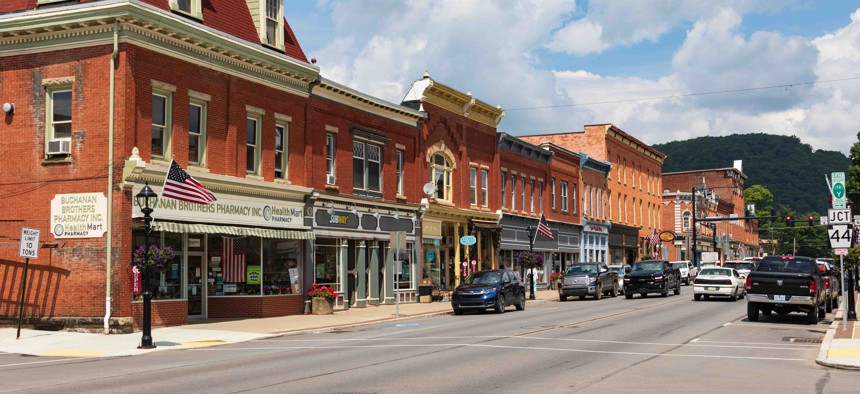Firm Offers Data on Hundreds of Businesses in 'Opportunity Zones'

Storefronts in a small Pennsylvania town. Shutterstock

Connecting state and local government leaders
The dataset’s creators hope to draw attention to small companies eligible for investment under the economic development program.
For state and local officials seeking to identify small businesses that could make for good investments under the recently created Opportunity Zones program, a New York City-based market intelligence firm says that it has data that could be useful.
The company, SMB Intelligence, earlier this month rolled out an interactive map and dataset that now feature about 2,800 small businesses and chains, located throughout the U.S., that are both “investable” and located within areas that are eligible for the program.
SMB describes itself as a “mission-driven” firm that seeks to “advance inclusive economic growth” by bolstering small businesses. “We think that Opportunity Zones has huge potential,” the company’s CEO and founder, Steve Waters, said by phone on Wednesday.
“We view it as: this is an excellent opportunity to direct capital to businesses that are often overlooked by traditional investors and lenders,” Waters added. “We’re basically trying to do everything we can to intentionally direct that capital towards entrepreneurs.”

The Opportunity Zones initiative offers tax breaks for people and corporations that funnel capital gains, from investments such as stocks or hedge funds, into “Opportunity Funds.”
These funds are expected to make investments in economically distressed census tracts designated as zones. Governors selected the zones, which were then certified by the Treasury Department and the IRS. There are now zones in about 8,700 census tracts, in all 50 states.
Because the program is still in its early stages it’s still unclear how far it will go toward amping up investment in poor areas.
Waters said that, as it stands, interest in real estate investment under the program appears to be strong, but that it’s less certain capital will “naturally flow” from the Opportunity Funds to small businesses.
But he believes the data that his firm has pulled together can help on this front, providing agencies with a valuable reference as they put together documents that describe possible investments in their areas. He’s not aware of anything else like it currently available.
There’s been interest in the data. Since posting it online, he said, about 40 state and local agencies, and 50 investors have reached out to SMB about it. The firm has plans to provide the data, which is updated every two weeks, to 15 agencies on a pilot basis starting in September.
Waters said he’s not sure yet how much the company might charge to access the information. He wants people to use it, but said it is labor intensive to assemble.
A footnote attached to a version of the interactive map that is currently available for free online explains that the company, which has a dozen people on staff, relies on “proprietary open-source intelligence” methods to compile the information.
That process involves people and computers tracking and analyzing information about small businesses gleaned from thousands of sources, ranging from news publications and social media, to government and real estate data.
SMB has a system to classify “prime growth” businesses—independent companies or small chains that meet certain conditions and could use investment capital to start up or expand.
The dataset includes details for each company, like what type of business it is (for instance, a restaurant, eye clinic, or art gallery), and whether the business is minority- or woman-owned, whether it is independent or a small chain, and how many establishments it has.
“There’s not like one secret source,” Waters noted, referring to the data. “We track growth signals.”
Some experts on Opportunity Zones have suggested that local government officials will have a key role to play in flagging promising businesses in the zones for investors. Waters says his company’s dataset could help to supplement this type of local knowledge.
“Everyone that we’ve had an inquiry from has looked at that initial map and has found something on there that they were not aware of,” he added. “That map is focused on planned growth. So a lot of times this is information that has not necessarily completely circulated.”
PREVIOUSLY on Route Fifty:
Bill Lucia is a Senior Reporter for Government Executive's Route Fifty and is based in Washington, D.C.

NEXT STORY: A Year After Hurricane Maria, Puerto Rico Finally Knows How Many People Died





